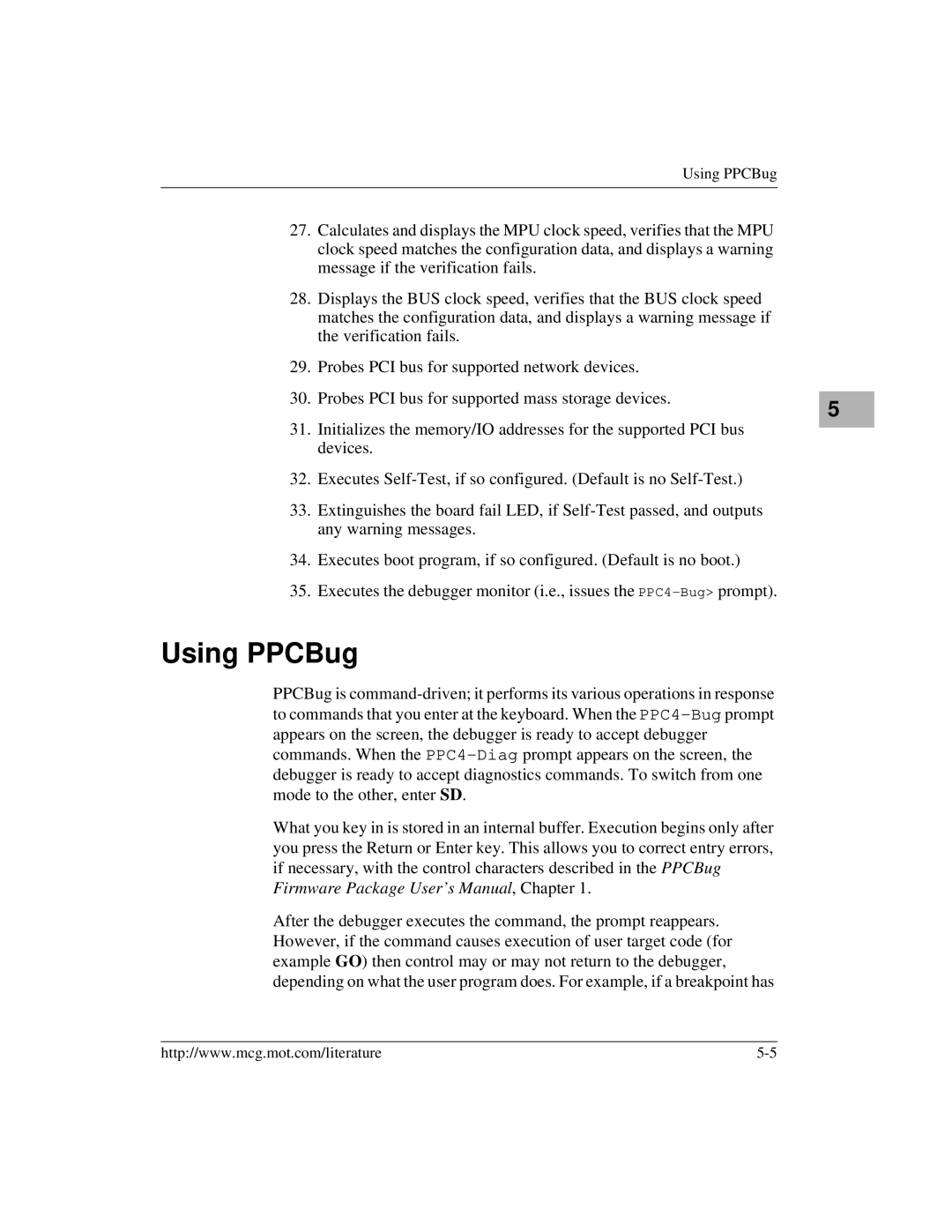
Using PPCBug
27.Calculates and displays the MPU clock speed, verifies that the MPU clock speed matches the configuration data, and displays a warning message if the verification fails.
28.Displays the BUS clock speed, verifies that the BUS clock speed matches the configuration data, and displays a warning message if the verification fails.
29.Probes PCI bus for supported network devices.
30.Probes PCI bus for supported mass storage devices.
31.Initializes the memory/IO addresses for the supported PCI bus devices.
32.Executes
33.Extinguishes the board fail LED, if
34.Executes boot program, if so configured. (Default is no boot.)
35.Executes the debugger monitor (i.e., issues the
5 |
Using PPCBug
PPCBug is
What you key in is stored in an internal buffer. Execution begins only after you press the Return or Enter key. This allows you to correct entry errors, if necessary, with the control characters described in the PPCBug Firmware Package User’s Manual, Chapter 1.
After the debugger executes the command, the prompt reappears. However, if the command causes execution of user target code (for example GO) then control may or may not return to the debugger, depending on what the user program does. For example, if a breakpoint has
http://www.mcg.mot.com/literature |
